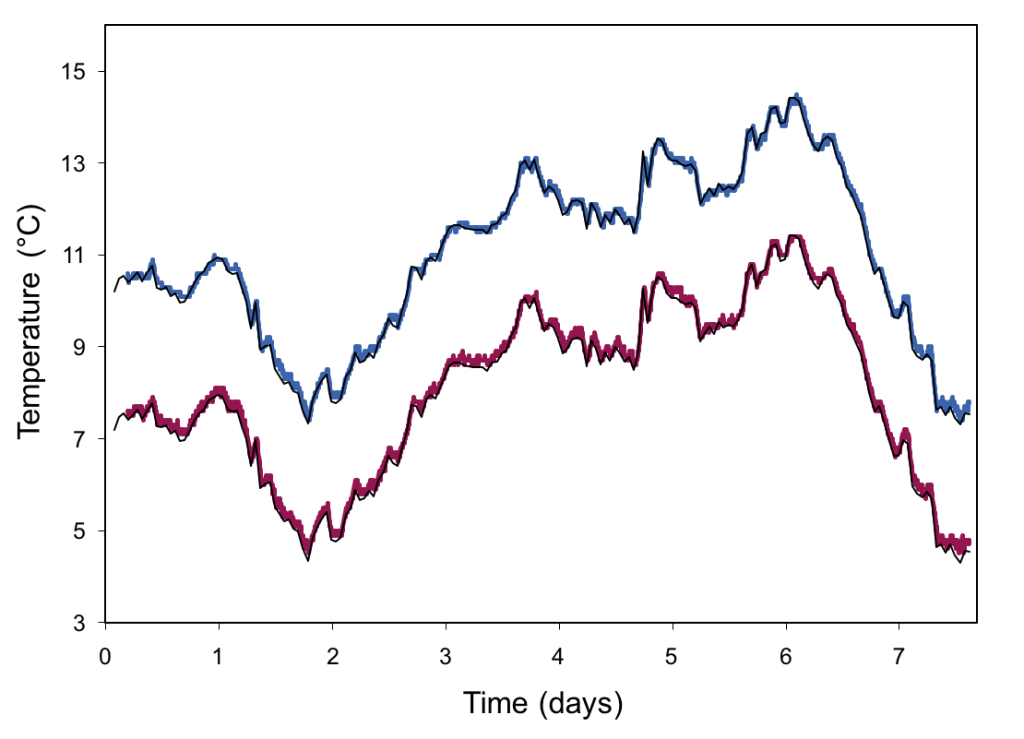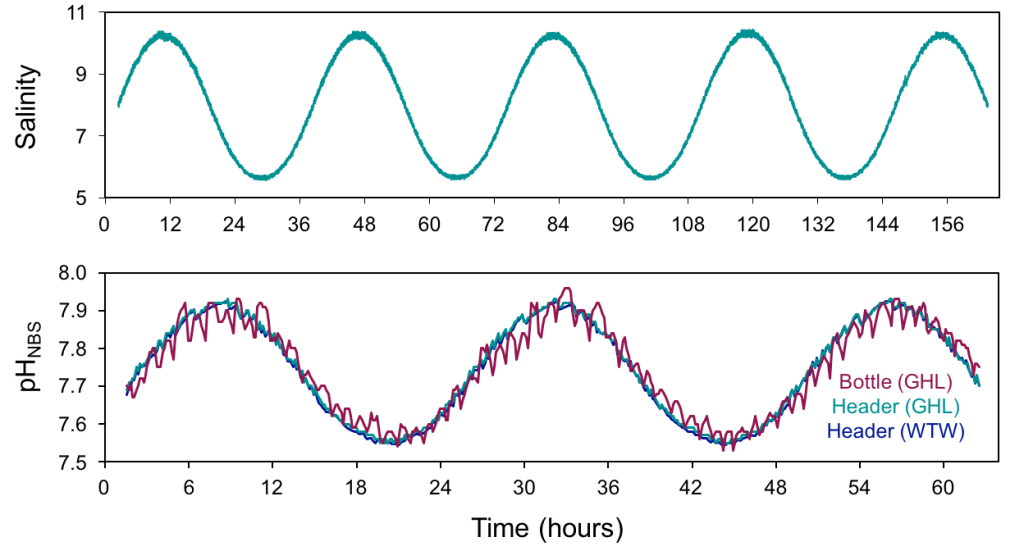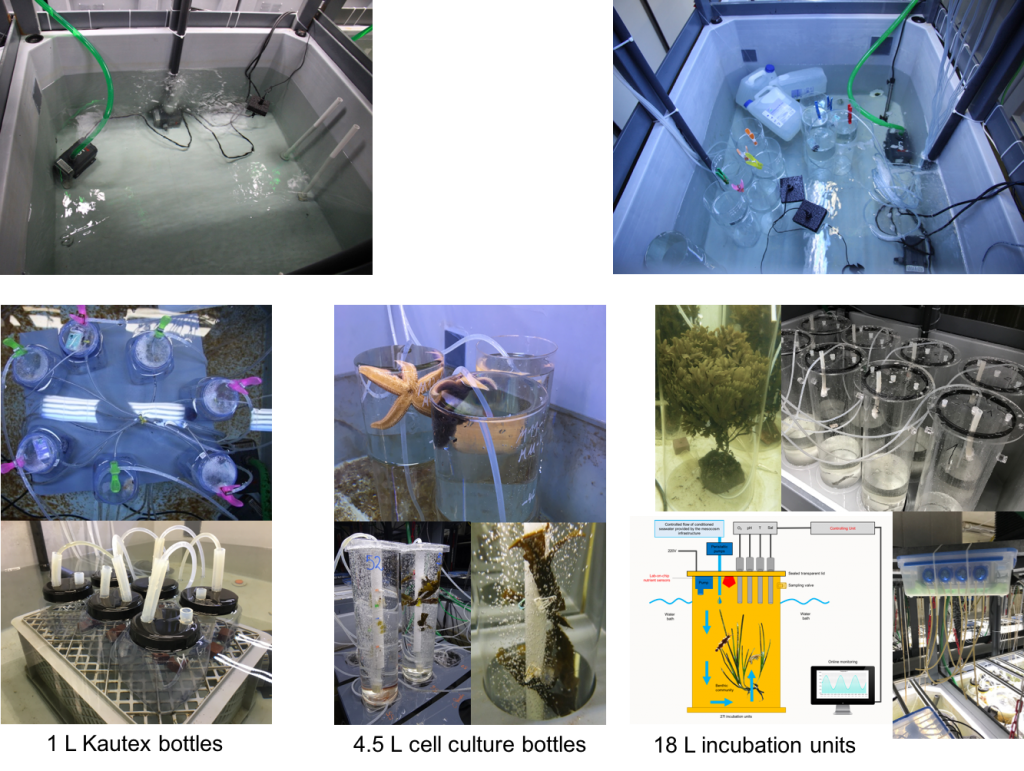Christian Pansch and Claas Hiebenthal
Climate change will not only shift mean environmental conditions, but will also increase frequency and intensity of extreme events, exerting additional stress on organisms and ecosystems. While field observations on extreme events are emerging, experimental evidence of their consequences is rare. We have established a mesocosm system that was solely developed to study the effects of environmental variability of multiple drivers (temperature, salinity, pH, light) at various temporal scales (diurnal – seasonal) in single species and communities: the Kiel Indoor Benthocosms (KIBs):

Real-time offsets from field measurements or dynamic regimes of environmental settings can be accomplished, including sinusoidal curve functions at any chosen amplitude or frequency, stochastic regimes, logged in situdynamics of previous years and modelled extreme events.


With temperature as the driver in focus, we have run several studies demonstrating that environmental fluctuations and importantly, their associated characteristics (such as frequency) mediate the strength of global change impacts on a key marine species.
Overall, systems such as the KIBs can help to overcome major short-comings in marine experimental ecology and can provide robust insights for predicting shifts in ecosystem structure and services, in a changing and fluctuating world.
In addition to temperature, salinity regimes as well as seawater pH can manipulated in fluctuating modes as was already applied in several experiments.

All 12 fully independent controlled KIB units can be operated independently. Additionally, each of the 12 KIB units can serve as water baths for several experimental (sub-)units, e.g. 1 or 2 L bottles, 4.5 L cell culture bottles or 18 L 600 mm deep PMMA (Plexiglas, acrylic glass) cylinders. Target organisms or simplified communities can, thus, be either placed directly inside the 600 L mesocosms (12 KIB units) at operational water depths of up to 600 mm, or in an almost infinite (depending on size) number of independent units.

This work is published in:
Christian Pansch and Claas Hiebenthal (2019) A new mesocosm system to study the effects of environmental fluctuations on marine species and communities. Limnology and Oceanography – Methods 17:145-162 (https://doi.org/10.1002/lom3.10306)
